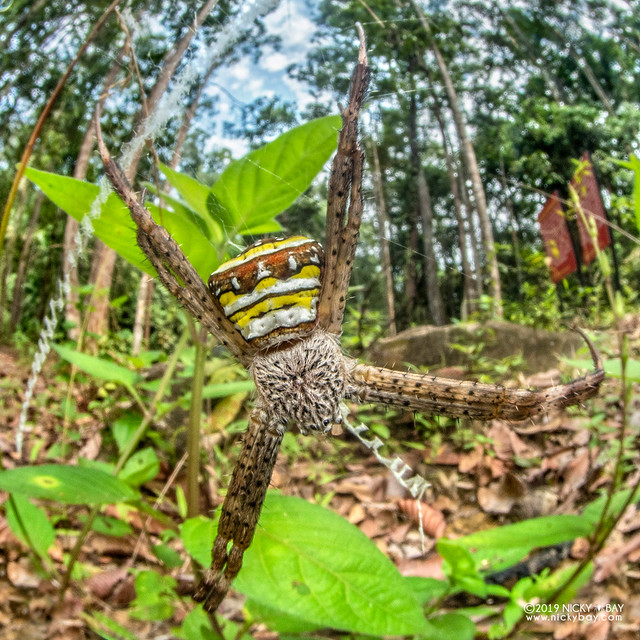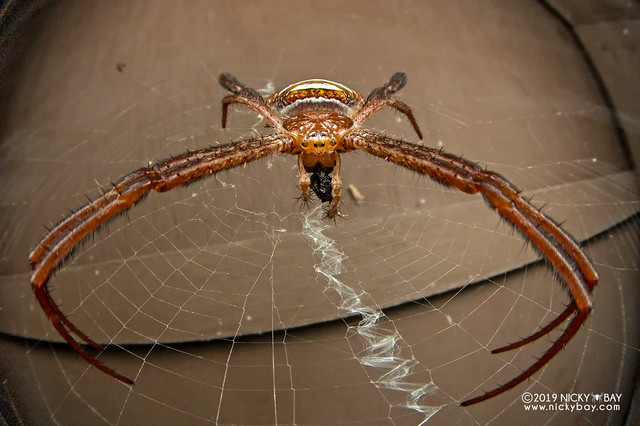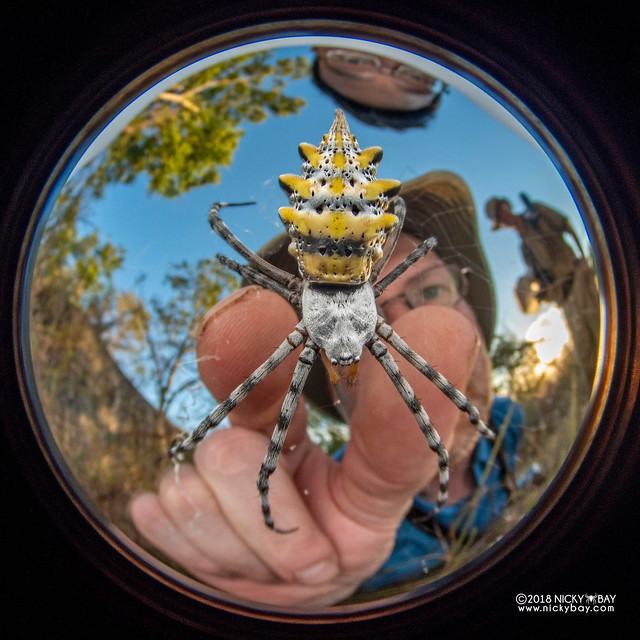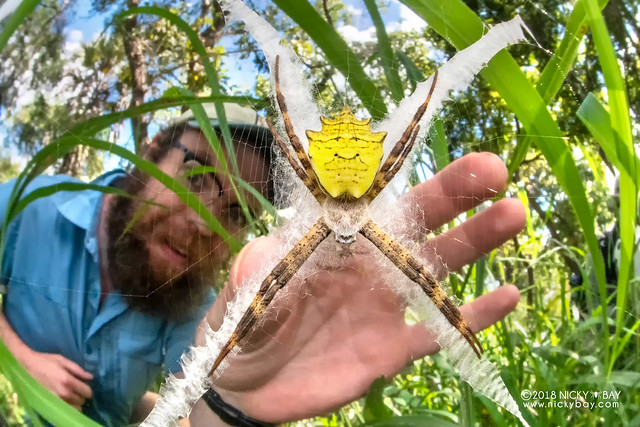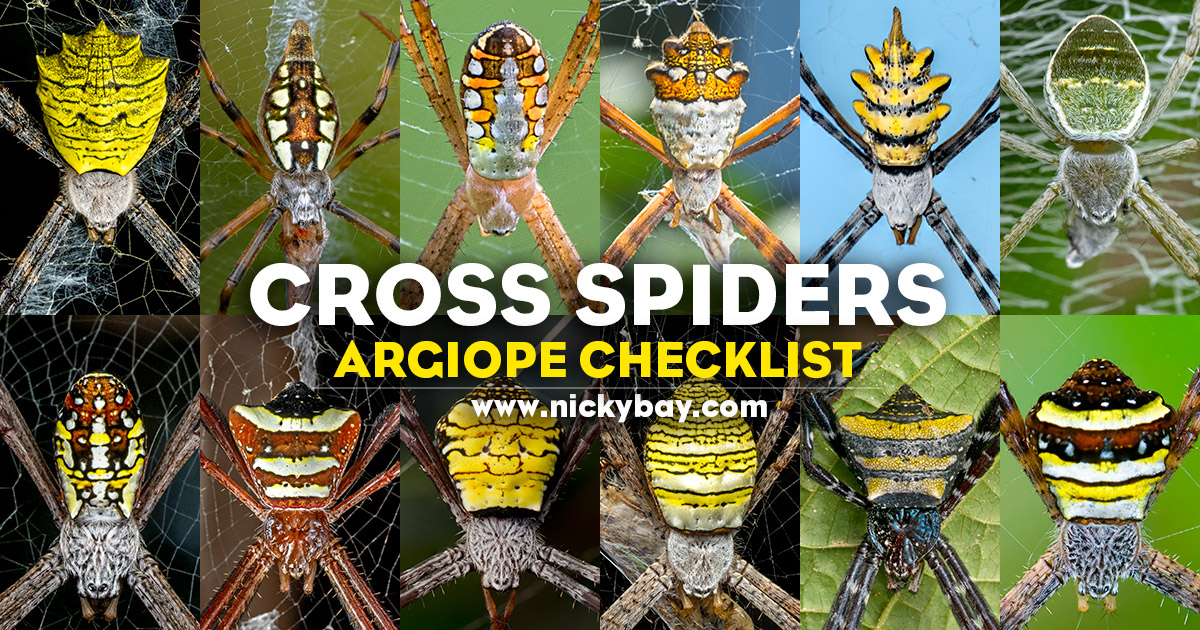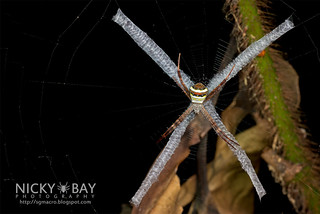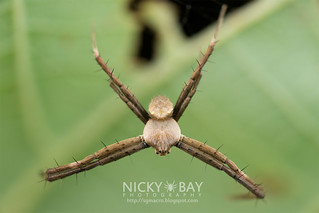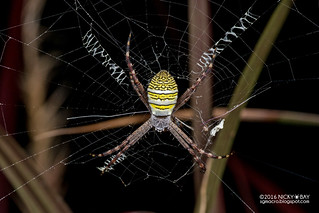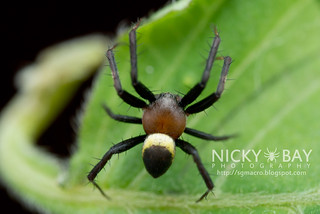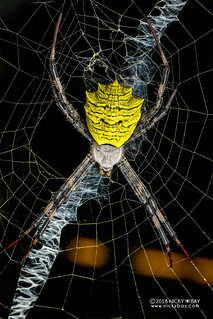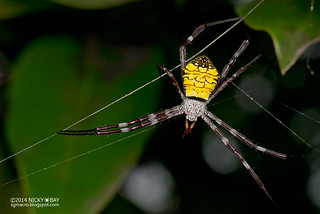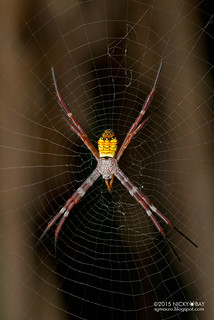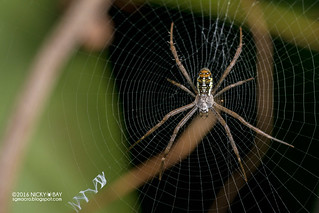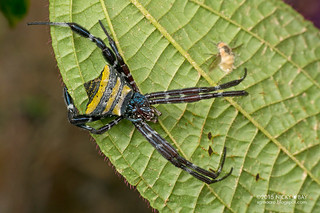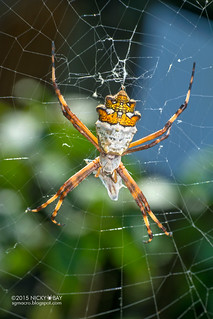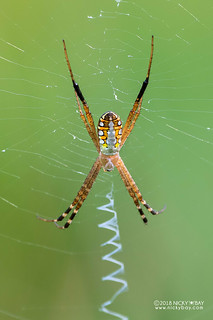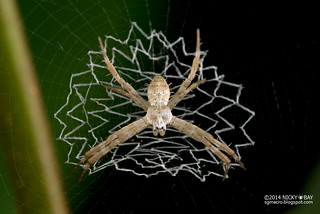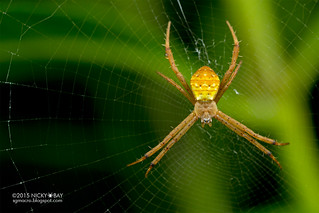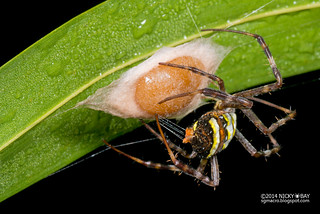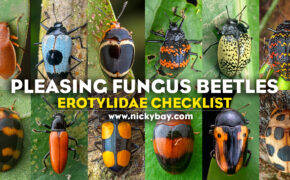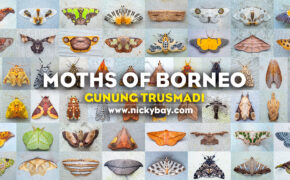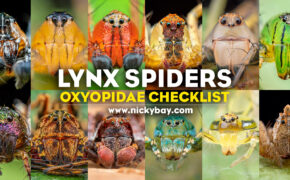Argiope Checklist: Cross Spiders
Cross orb weaver spiders from the genus Argiope Audouin, 1826 have some of the most common names tagged to them, namely Cross Spiders, Zig-Zag Spiders, Signature Spiders, Silver-Faced Spiders, St. Andrew’s Cross Spiders, etc. There were always exceptions to the common name within the genus, so I settled for one which matched closely to all of the species listed on this page – Cross Spiders. This refers to the position of its legs forming a typical X-posture when perched on its web. Sometimes, it may build stabilimenta to extend its cross.
Stabilimentum of Argiope
Spiders of the genus Argiope are known to build stabilimenta, which are conspicuous silk structures built onto their vertical orb webs. In most species, the juveniles weave a zig-zag spiral mesh to form a disc which the spider perches over. When they approach maturity, the stabilimentum may be formed by vertical or diagonal bands of silk weaved in a zig-zag fashion.
The purpose of the stabilimentum is not clear, but there are some possible reasons suggested over the years.
Makes spider look bigger
The stabilimentum may make the spider appear bigger and less of an easy prey to potential predators. A more visible web could also prevent it from being destroyed accidentally by other mammals.
Attracts more prey
As the silk reflects UV readily, the stabilimentum could potentially attract more prey to the web.
Stabilises the web
Perhaps as the name suggests, the stabilimentum acts to strengthen the web’s structure to prevent or reduce damage from strong winds.
Here are some examples of stabilimenta built by Argiope.
Juvenile cross spider (Argiope sp.)
This is the typical stabilimentum of a juvenile Argiope.
Juvenile cross spider (Argiope cf. lobata)
Some species may weave a tighter mesh of stabilimentum.
Juvenile cross spider (Argiope sp.)
As they grow, their stabilimentum would “upgrade” to thicker bands.
Green cross spider (Argiope chloreis)
However, some species would retain the disc mesh even when mature, such as this Argiope chloreis.
Cross spider (Argiope versicolor)
The full stabilimentum of a Argiope versicolor may form a large “X”, seemingly making a visual extension of its legs on the web.
Cross spider (Argiope reinwardti)
Some Argiope may just built a single diagonal band of stabilimentum in a zig-zag fashion.
Cross spider (Argiope catenulata)
Some may just build a single vertical band of stabilimentum.



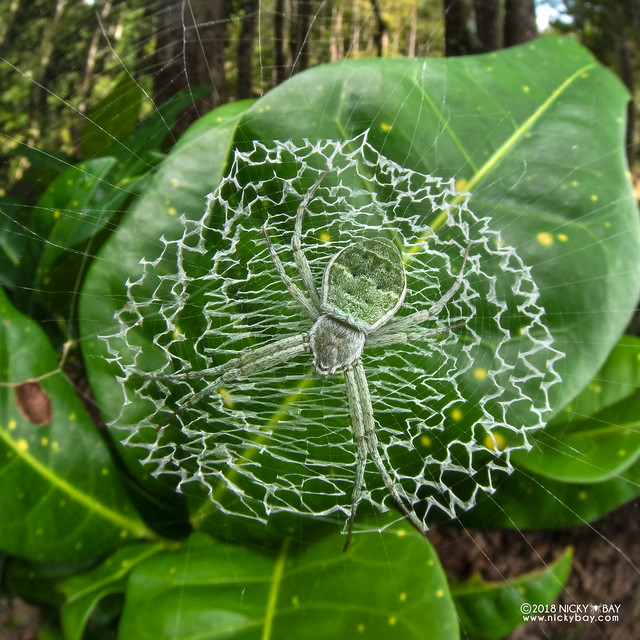
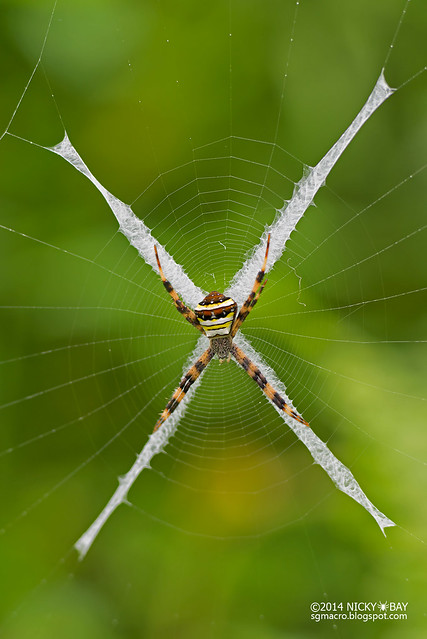


Checklist
This page consists of a personal checklist of all Cross Spiders (Argiope) that I’ve encountered over the years. I have not included the species names nor the details behind the genus placements, so this is just a personal reference. Some spiders may appear identical on photos, so please do not assume the identification of a spider simply based on the photographs here.
All photos are of live subjects shot in the field, with the dorsal view selected where available. Click on individual photos for larger views and views from other angles. As most specimens were not collected, identifications were done purely based on photographs and may not be 100% accurate.
This page will be updated regularly, please let me know if you spot any mistakes.
View my complete Flickr photo set: Argiope Audouin, 1826.
Region Filters
Click on any region to show only records from that region.
Family: Araneidae Clerck, 1757
Genus: Argiope Audouin, 1826
Others
Wide-Angle Photos
In this section I’ll feature some interesting wide-angle shots of Argiope. Most are taken with a DIY cctv relay setup or with the Laowa 15mm 1:1 Wide Angle Macro Lens.
Cross spider (Argiope versicolor)
Cross spider (Argiope catenulata)
This beautiful species weaves its web over water bodies. This was photographed with the Singapore Quarry in the background.
Green cross spider (Argiope chloreis)
Most of the Argiope chloreis that I’ve encountered built their webs over leaves. The adult spider is just about 1cm in size, so getting the background into the photo was a challenge.
Cross spider (Argiope reinwardti)
This is one of the species with an almost hairless carapace (the other one is Argiope doleschalli). I photographed this under the roof of a shelter at Mount Kinabalu, Sabah.
Cross spider (Argiope australis)
I photographed this in Mozambique with John Abbott pretending to pinch the spider. The field of view was so wide that my head was in the frame, together with curious bystanders who had no idea that they were inside the photo.
Cross spider (Argiope cf. lobata)
Also photographed in Mozambique, this was the shot that started the series of photos showing giant humans creepily approaching spiders. The idea was suggested by co-instructor Thomas Shahan during BugShot 2018.
